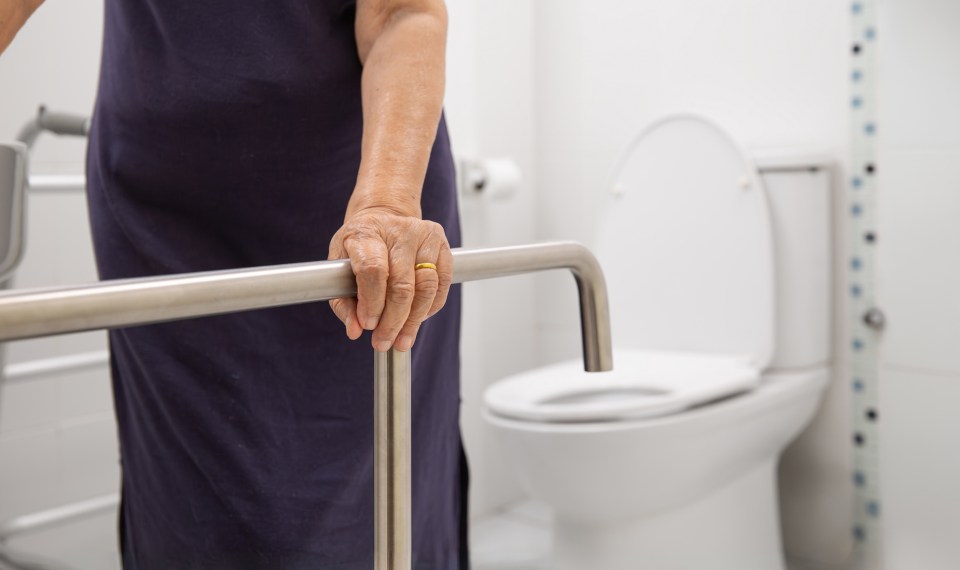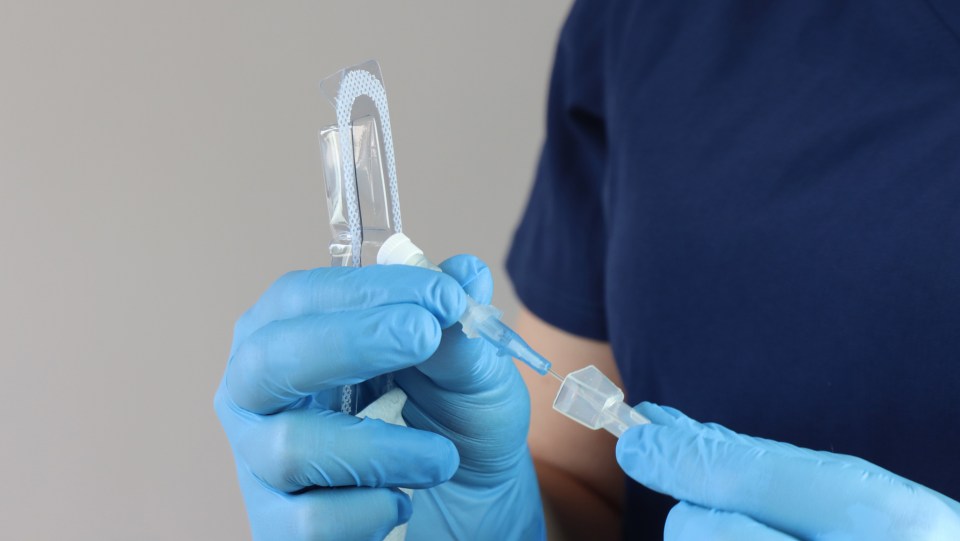When COVID-19 emerged in early 2020, it quickly became a barrier to accessing healthcare. One of the many populations impacted were those with diabetes.
There was an abrupt interruption to accessing wound care, vascular assessments, foot care, testing and screening.
This interruption in care often led to severe infection and to amputations. During the pandemic, this population was 10.8 times more likely to receive an amputation than before the pandemic (Casciato 2023).
Even prior to COVID-19, there was an underutilization of medical care in the diabetic population with an estimation of less than half of the total population of diabetics attending diabetes checkups or annual diabetes reviews (Gurney 2018). Without receiving comprehensive diabetes management, there’s an increased risk of amputation and infection.
Prevention of amputation and early identification of wounds and infection remain a priority for those with diabetes. However, there is a lack of education on risk factors and prevention strategies for amputation, wounds and infection. So as a physical therapist, what can we do to help our patients with diabetes? First, we must understand and identify the risks.
Risk Factors for Amputation
Identifying risk factors for amputation is the first step in bringing forth awareness. It will help the patient identify potential problems and prevent progression of disease that could result in amputation.
According to various studies, there are several risk factors that increase risk of amputation (Barnes 2020; Gurney 2018; Hippisley-Cox 2015, Hippisley-Cox 2016, Hoffstad 2015; Newhall 2016; Pickwell 2015; Rodrigues 2016, Verrone Quilici 2016). They include:
Comorbidities. High comorbidity burden has potential to severely complicate a patient case and increase risk of amputation and even death. The comorbidities that present as risk factors include diabetic neuropathy, hypertension, peripheral arterial disease, renal disease, coronary artery bypass graft surgery, Charcot’s arthropathy, stroke, cerebrovascular disease, myocardial infarction, congestive heart failure, dyslipidemia and a history of amputation (Gurney 2018;Hoffstad 2015, Rodrigues 2016, Verrone Quilici 2016).
Demographics. Gender, race, ethnicity, socioeconomic status and region have a correlation to amputation risk. It’s been found that men are at higher risk for amputation compared to women, and African Americans, Native Americans and those of indigenous ethnicity are also at a greater risk, as are those with low socioeconomic status or those who live in a rural area (Barnes 2020; Gurney 2018; Hoffstad 2015; Newhall 2016; Rodrigues 2106, Verrone Quilici 2016).
Medical Risk Factors, including peri wound edema, foul smell, (non) purulent exudate, deep ulcer, positive probing to bone test, pretibial edema, fever, elevated C-reactive protein and increasing severity of infection (Pickwell 2015).
Modifiable Risk Factors. Smoking, medication compliance and diet have been identified as modifiable risk factors. These risk factors are perhaps the most important, as they can be manipulated. Smoking increases a patient’s risk of amputation and is a strong risk factor for peripheral vascular disease, increasing the risk by nearly 4-fold (Barnes 2020; Hippisley-Cox 2015). Medication compliance is essential in diabetes for controlling the disease and lessening the severity of complications and amputation risk (Hippisley-Cox 2016, Verrone Quilici 2016). High levels of glucose and triglycerides in a patient’s diet have been proven to increase the risk of amputation (Verrone Quilici 2016). It is recommended that diabetics decrease their carbohydrate and sugar intake and increase their protein intake.
Prevention Strategies
Routine diabetes checkups or an annual diabetes review is highly recommended. Comprehensive diabetes management is crucial and consists of vascular assessment, retinal screening, hemoglobin A1c testing, foot care, wound care, infection prevention and education on blood pressure control, exercise and modifiable risk factors.
Evidence has proven that the following management strategies need to be routine to prevent amputations:
Vascular Assessment. Peripheral vascular disease has been shown to be the condition with the strongest association to amputation, increasing the risk by 13 times (Gurney 2018). This condition is more so a marker of disease progression and amputation risk than it is a comorbidity. Diabetes utilizes it as a pathway to infection, ulcer complications and amputation. Therefore, regular vascular care and assessment are crucial elements in the plan of care for patients with diabetes (Barnes 2020; Newhall 2016).
Retinal Screening. Physical therapists should also consider recommending retinopathy as a potential comorbidity in annual diabetic reviews. Diabetics, regardless of the type, are at increased risk of blindness, so it is recommended that these patients receive retinal screening more than once a year as a preventative measure (Hippisley-Cox 2015; Rodrigues 2016).
Hemoglobin A1c Testing. Intensive glycemic control, specifically hemoglobin A1c testing, plays an important role in diabetes management and is a critical factor for ulcer healing and infection elimination (Rodrigus 2016; Verrone Quilici 2016). Only about 30% of those at high risk for amputation receive hemoglobin A1c testing regularly (Newhall 2016). This needs to be consistently monitored, as poor control of glucose and vascular health over multiple years is a predictor for potential amputation (Gurney 2018).
Foot Care. Diabetic foot ulcers can occur as a result of diabetes combined with neuropathy, peripheral vascular disease, repetitive trauma or infection (Rodrigues 2016). Poor management of ulcers, on top of poor healing capacity already present in many diabetics, have a direct correlation to amputation risk. It is recommended that we educate patients on diabetic foot ulcers, foot care and footwear, and refer patients to a podiatrist when appropriate. (Hippisley-Cox 2015).
Infection Control. Prevention of infection also plays a major role. It’s been found that, even with severe infection, systemic signs of inflammation are commonly absent, and local signs and symptoms of infection are commonly diminished due to diabetic complications (Pickwell 2015). This increases the difficulty of early identification of wounds and their severity. Educating your patient on how to properly care for a wound, how to check for signs of infection daily and when to seek medical care can decrease the likelihood of infection.
Other Prevention Strategies. Additional strategies include education on all modifiable risk factors listed previously, blood pressure control and exercise (Hippisley-Cox 2015). It’s recommended that patients obtain a blood pressure monitor and encourage blood pressure medication compliance for improved control. Additionally, education on the importance of physical activity is vital. The ADA recommends that those with diabetes exercise for at least 150 minutes a week at moderate to vigorous intensity with no more than two days in between sessions.
Interdisciplinary Care
Collaboration plays a key role in diabetic care prior to infection or hospitalization.
In-person clinical observation and routine follow-ups are considered the most optimal, and effective triaging needs to occur so vulnerable patients take priority (Casciato 2023).
After the COVID-19 pandemic, telehealth surfaced as an alternate form of medical treatment. In cases where we cannot provide in-person care, we need to first triage patients, then provide telemedicine as an alternative, and consider the possibility of home interventions (e.g., oral antibiotics, home wound debridement, larval therapy) (Casciato 2023).
Providing proper strategies to prevent disease, and implementing a proactive targeted program that includes comprehensive diabetes management and targeted vascular care is critical in reducing hospitalizations, amputations and progression of disease.
References:
Barnes J. (2020). Epidemiology and Risk of Amputation in Patients with Diabetes Mellitus and Peripheral Arterial Disease. Arteriosclerosis, Thrombosis, and Vascular Biology.
Casciato D. (2023). Diabetes-Related Major and Minor Amputation Risk Increased During the COVID-19 Pandemic. Journal of American Podiatric Medical Association.
Gurney J. (2018). Risk of Lower Limb Amputation in a National Prevalent Cohort of Patients with Diabetes. Diabetologia.
Hippisley-Cox J. (2015). Development and Validation of Risk Prediction Equations to Estimate Future Risk of Blindness and Lower Limb Amputation in Patients with Diabetes: Cohort Study. British Medical Journal.
Hippisley-Cox J. (2016). Diabetes Treatments and Risk of Amputation, Blindness, Severe Kidney Failure, Hyperglycemia, and Hypoglycemia: Open Cohort Study. British Medical Journal.
Hoffstad O. (2015). Diabetes, Lower Extremity Amputation, and Death. Diabetes Care.
Newhall K. (2016). Amputation Rates for Patients with Diabetes and Peripheral Arterial Disease: Effects of Race and Religion. Annals of Vascular Surgery.
Pickwell K. (2015). Predictors of Lower Exremity Amputation in Patients with an Infected Diabetic Foot Ulcer. Diabetes Care.
Rodrigues B. (2016). Prevalence and Risk Factors for Diabetic Lower Limb Amputation: A Clinic Based Case Control Study. Journal of Diabetes Research.
Verrone Quilici M. (2016). Risk Factors for Foot Amputation in Patients Hospitalized for Diabetic Foot Infection. Journal of Diabetes Research.
The content of this site is for informational purposes only and should not be taken as professional medical advice. Always seek the advice of your physician or other qualified healthcare provider with any questions you may have regarding any medical conditions or treatments.




